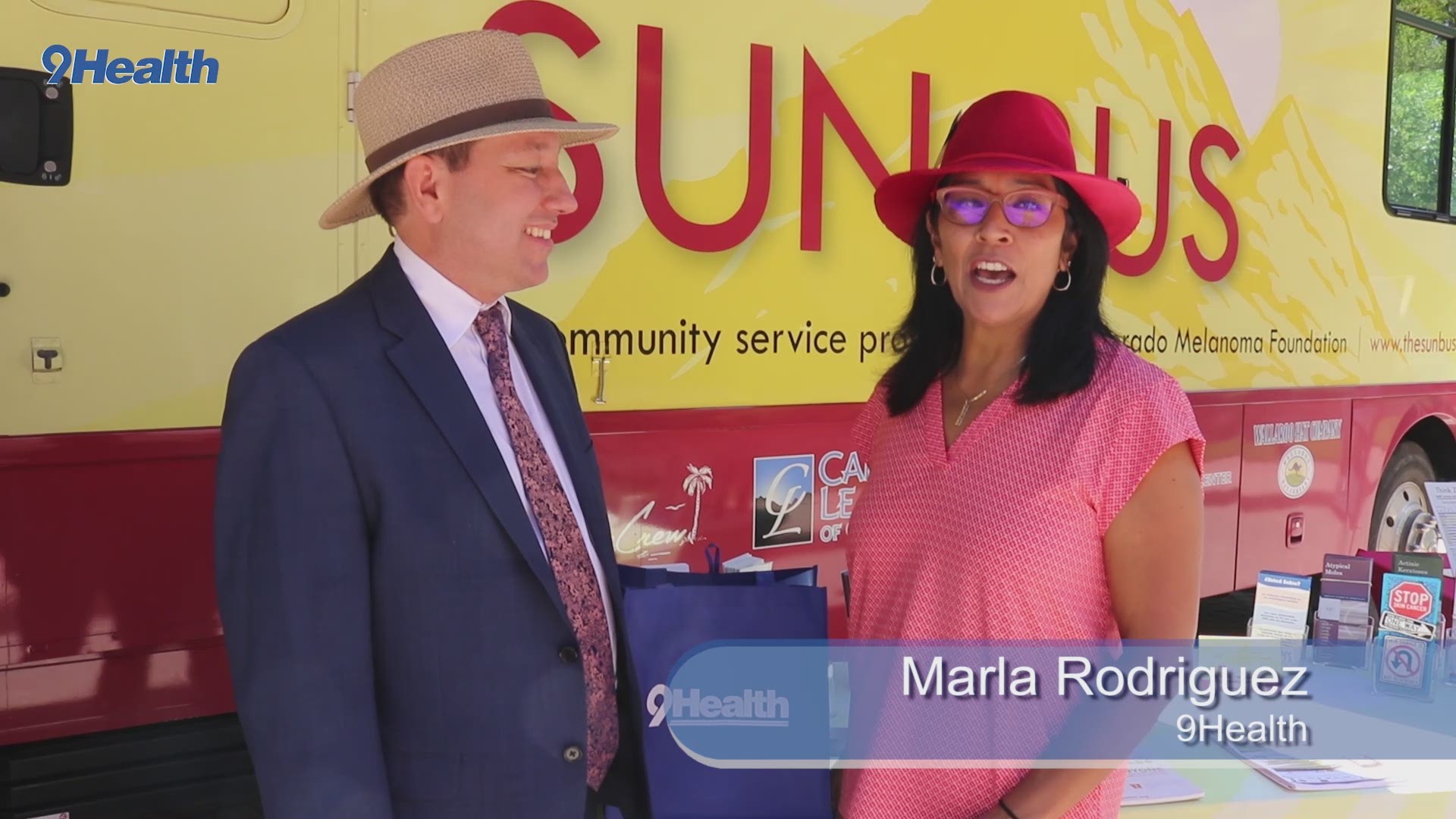Colorado is a beautiful state where we get 300 days of sunshine. However, there is a downside to all that sun. Combine it with the highest average elevation of any other state, and Colorado has the nation’s highest per capita rate of skin cancer.
Even though skin cancer is one of the most common cancers in our state, it is also one of the most preventable. To educate the public on how to prevent damage from harmful UV rays The Sun Bus, from the Colorado Melanoma Foundation, is driving across Colorado offering free skin screenings and sun safety education.
July is UV Safety Awareness Month, so we talked with Dr. Neil Box, President of the Colorado Melanoma Foundation on Health Happens, our weekly Facebook Live show. Dr. Box says because we are a state with high UV exposure, we all need to take extra steps to protect ourselves, “If you’re going to be outside, look for the shade and go there. Wear sun-safe clothing like a hat, sleeves, and sunglasses. For parts of the body that are exposed, wear sunscreen.”
Is one sunscreen better than another? Dr. Box says to follow the American Academy of Dermatology’s recommendations when it comes to sunscreen.
“The simplest things to look for is that it’s SPF 30 or above and broad-spectrum,” she said.
Broad-spectrum sunscreens protect against both UVA and UVB rays. Overexposure to either can lead to skin cancer. In addition to cancer, UVA rays can prematurely age your skin, causing wrinkles and age spots. UVA rays pass through window glass. UVB rays are the primary cause of sunburn and are blocked by window glass.
Prevention measures are important and that includes regularly checking your skin for any changes. The American Cancer Society says knowing your skin is important to finding skin cancer early. Be aware of your normal pattern of moles, freckles, and blemishes and talk to your doctor if you notice any significant changes. They have steps for checking your own skin on their website.
Dr. Box says when checking your skin, look for the ABCDE signs of melanoma, and if you see one or more of these signs, make an appointment with a physician immediately.
A = Asymmetry - One half is unlike the other half
B = Border - An irregular, scalloped or poorly defined border
C = Color - Is varied from one area to another; has shades of tan, brown or black, or is sometimes white, red, or blue
D = Diameter - Melanomas are usually greater than 6mm (the size of a pencil eraser) when diagnosed, but they can be smaller
E = Evolving - A mole or skin lesion that looks different from the rest or is changing in size, shape or color
To watch the full Health Happens episode with The Sun Bus, click here.
In addition to tracking the Sun Bus down to get a free skin screening, you can also get a free skin screening at select 9Health Fairs. 9Health will have several health fairs this fall, check the website in August to find one near you.
9Health is a 501(c)(3) community non-profit empowering people to put health in their own hands by providing tools such as preventive health screenings, evidence-based, objective health education and eTools and resources for every day in your health journey.
SUGGESTED VIDEOS | Local stories from 9NEWS

